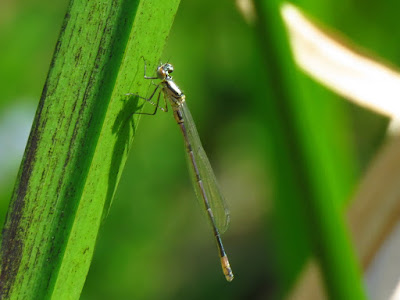I kneeled down and crept closer. The butterfly stood tiptoeing exposing its wings fully to the low afternoon sun, warming up. I was on the coastal path by the low cliff top at Spurn Head, a well known bird migration hotspot. This was my last Painted Lady of that year, 5th October 2014. The butterfly's faded colour and worn wings suggested that it was old and had been on the wing for a while, migrating. It still had a very long journey ahead.
Cosmopolitan and warmth loving
The Painted Lady is one of the most cosmopolitan butterflies, only absent from South America, Australia and the polar regions. It is cosmopolitan in more than one sense, as it is a constant traveller, moving in search of good caterpillar food sources and away of the cold. Unlike other butterflies, which have a cold-resistant stage - which can be the egg, the caterpillar or the adult - no life cycle stage of the Painted Lady can survive cold temperatures. In the UK, most sightings occur from May to September, with a strong peak in August.
This fresh individual from 25th July (Hornsea, East Yorkshire), feeding on buddleia, is likely to have been born locally.
A male Painted Lady hilltopping in the Swiss Alps (12th August 2015).
Through the desert and back
Painted Ladies migrate north in the spring to arrive as the summer starts in Europe, and they do the reverse flight in the autumn - just like many migratory birds - although the facts and routes of their migration have been only recently been pieced together. Unlike birds, migration is achieved in several generations - individual adults live for about four weeks - so it will be different individuals who carry out each leg of a migratory flight. Scientists used to think that the Northern European individuals overwintered around the Mediterranean and in North Africa, and that if any made it across the Sahara they might reach a dead end. Even a return journey from northern Europe was doubted, as migration is less obvious in the autumn, when the butterflies fly at high altitude to take advantage of tail winds, where they are out of sight. Research in the last few years has revealed that their migratory journey encompasses sub tropical Africa in a circuit of about 12,000 km. The migratory journey of the Painted Lady is actually the longest of any butterfly, with individuals being able to cover over 4000 km journeys, easily surpassing the Monarch! Gerard Talavera and Roger Vila, from the Institut de Biologia Evolutiva in Barcelona, travelled to four countries in the African Sahel (Senegal, Benin, Chad and Ethiopia), a band of savannah environments just south of the Sahara desert in October-November, just after the rainy season, with the vegetation is at its lushest. They visited tens of sites in each country in search of Painted Ladies. They found evidence of southbound migration, with worn individuals and directional movements, and local breeding. This is evidence that the European populations must actually cross the Sahara en masse during their migrations, to spend the winter months in tropical areas after the rainy season. Overall, they estimated that between six to ten generations are involved in the yearly cycle.
Stable isotopes and the autumn migration
Is there an efficient return autumn migration in the Painted Lady? How can we find out? Scientists can fit migratory birds with miniature geolocators before migration, and these can be retrieved when the birds return to their breeding grounds, and the collected data allows to reconstruct their migratory routes and strategies. Unfortunately this is not feasible with small insects. There is, however, an alternative technique is at hand: to use stable isotopes. Stable isotopes, which have a lot of regional variation, leave permanent signatures of the natal origin of an insect in their bodies. The tissue development of a butterfly takes place in the caterpillar and pupal stage - often occurring in a single plant, and therefore reflects precisely the isotope composition of the particular place were the butterfly developed. If the adult emerging then migrates and is captured at its destination, or en route, the stable isotope composition of its wings provides a signature of where the butterfly developed.
In a different study, Talavera and his multidisciplinary team collected specimens from around the Mediterranean from Morocco and Spain to Israel and Egypt just as they reappeared in early spring (February to April). They then analysed the stable hydrogen isotopes on samples of the butterfly wings. These were consistent with the presence of some locally born individuals but many others had a sub-Saharan origin, providing evidence for a return migration from the Sahel and subtropical Africa in spring.
Another likely migrant, this one a spring one, found in Flamborough head, 29th June 2015.
Next time you see one of these tattered Painted Ladies, spare a thought about the incredible distance that this small insect might have covered, and that it might have spend the last week or two flying across the Sahara, crossing the Mediterranean and moving through Europe in search of food for its next brood.
More information
The Vanessa cardui project. Here.
Talavera, G. & Vila, R. Discovery of mass migration and breeding of the painted lady butterfly Vanessa cardui in the Sub-Sahara: the Europe–Africa migration revisited. Biol. J. Linn. Soc. Lond. 120, 274–285 (2017).
Talavera, G., Bataille, C., Benyamini, D., Gascoigne-Pees, M. & Vila, R. Round-trip across the Sahara: Afrotropical Painted Lady butterflies recolonize the Mediterranean in early spring. Biol. Lett. 14, (2018).













































